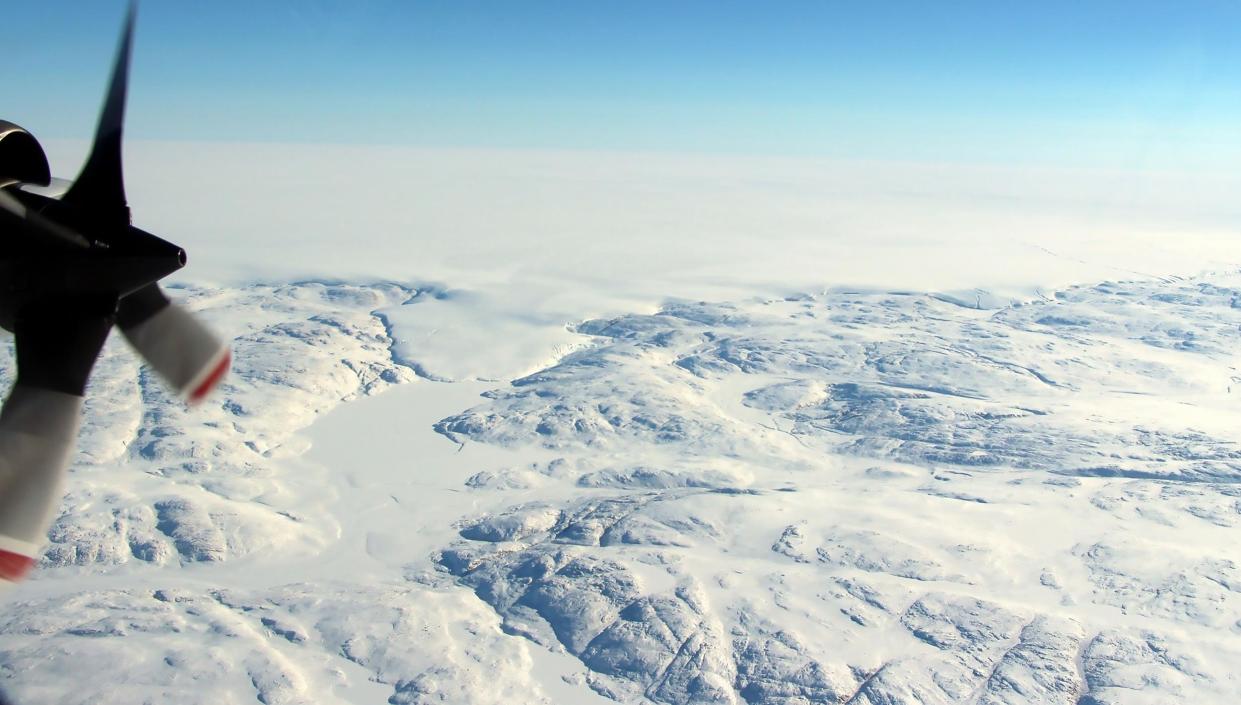Giant meteorite crater bigger than Paris found deep beneath Greenland’s ice sheet

A giant crater bigger than Paris that former when a meteorite smashed into Earth has been found deep below Greenland’s ice sheets.
The 31km-wide impact site was created between three million and 12,000 years ago and is the first to be found underneath one of Earth's continental ice sheets.
An international team of scientists came across the crater below the Hiawatha Glacier in north-west Greenland.
It is believed the impact of the meteorite could have drastically altered the climate and led to serious consequences for life on Earth at the time.
The scars of the meteorite smash have been preserved since then after being buried underneath ice more than a kilometre thick.
It was first discovered in July 2015 when researchers from the Natural History Museum of Denmark, University of Copenhagen, detected a depressed area underneath the glacier while inspecting a new map of its physical features.
A research plane then performed state-of-the-art ice radar measurements which revealed the huge crater in detail.
Chemical analysis performed at Cardiff University allowed researchers to paint a picture of the type of object capable of causing the amount of destruction.
They did this by measuring the sediment from a river that drains straight through the glacier, and looked for signs of metals that would indicate it was caused by a meteorite.
A number of iron meteorites, including a 20-tonne fragment kept at the Geological Museum in Copenhagen, had previously been found in the area around Cape York, not far from Hiawatha.
This led scientists to believe an impact must have occurred in the region, a theory which lacked evidence until now.
Dr Iain McDonald, from Cardiff University's School of Earth and Ocean Sciences, co-authored the research, which has been published in the Science Advances journal.
He said: "While it requires more research, we consider it possible that the Cape York irons may have been outer fragments or even boulders on the surface of the main meteorite. We suspect these initially detached in Earth's gravity field and then decelerated as they entered the atmosphere to fall south of the Hiawatha crater."
Professor Kurt H Kjaer, from the Natural History Museum of Denmark and lead author of the research, said: "The crater is exceptionally well-preserved and that is surprising, because glacier ice is an incredibly efficient erosive agent that would have quickly removed traces of the impact.
"The next step in the investigation will be to confidently date the impact. This will be a challenge because it will probably require recovering material that melted during the impact from the bottom of the structure, but this is crucial if we are to understand how the Hiawatha impact affected life on Earth."

 Yahoo News
Yahoo News 
